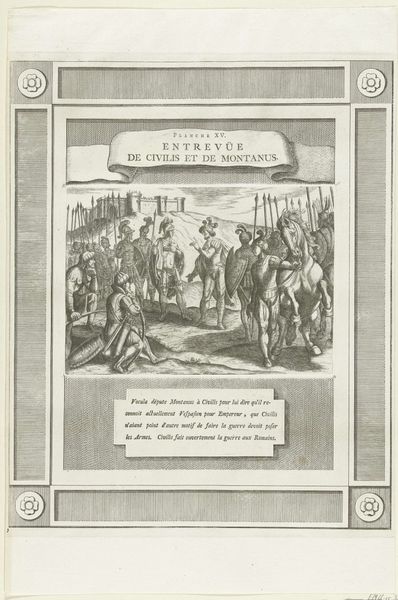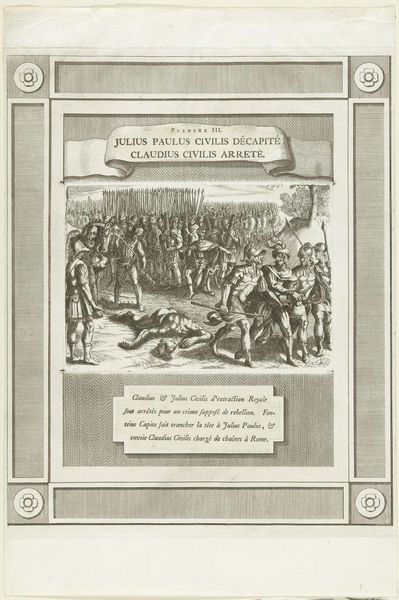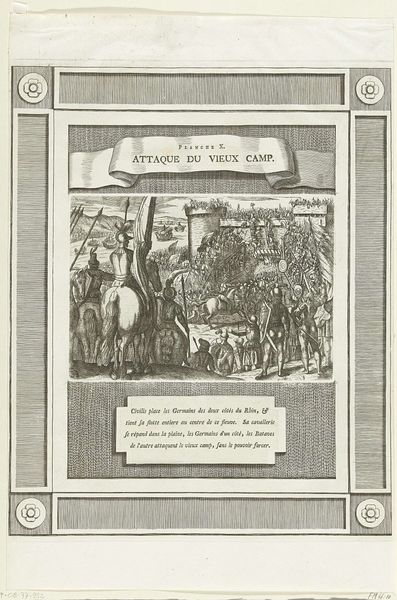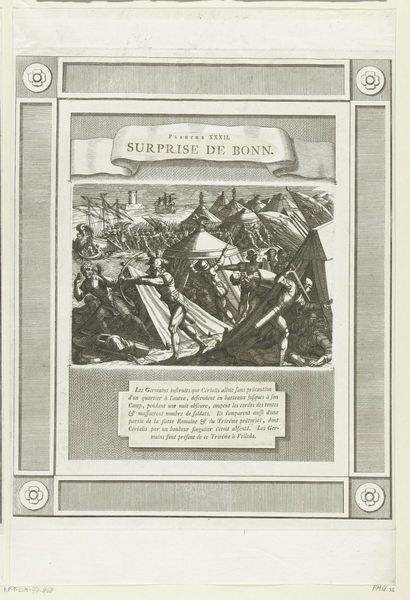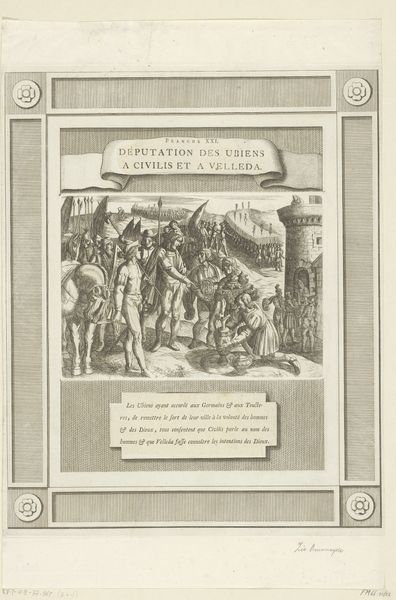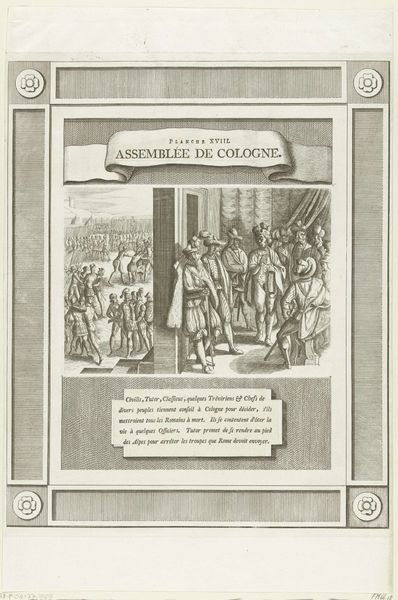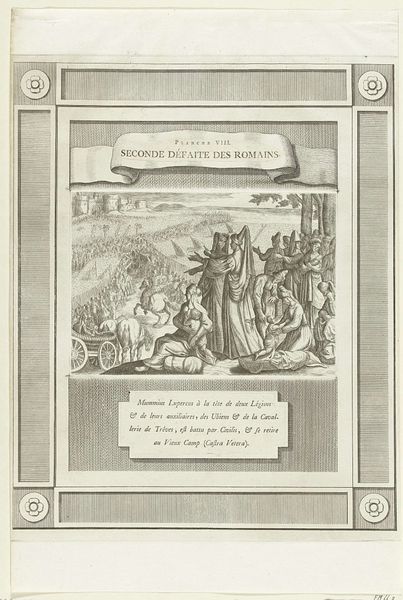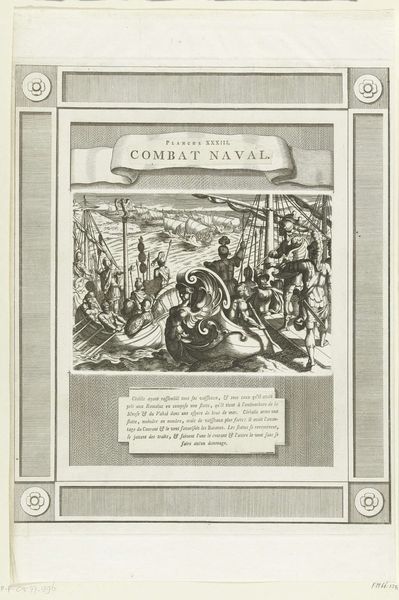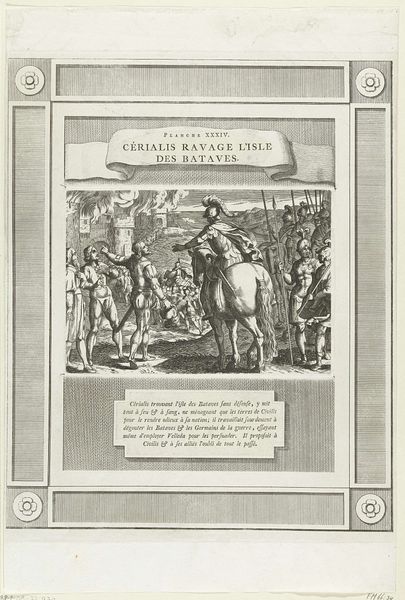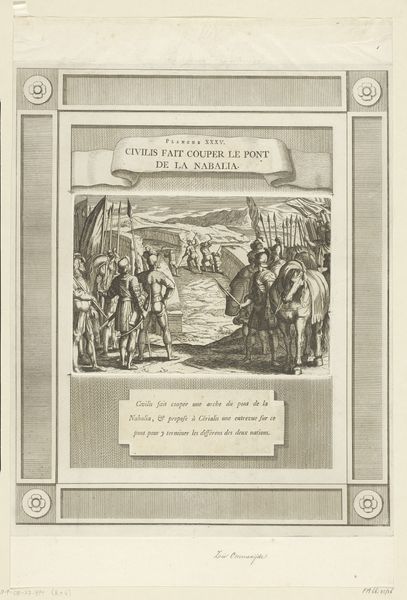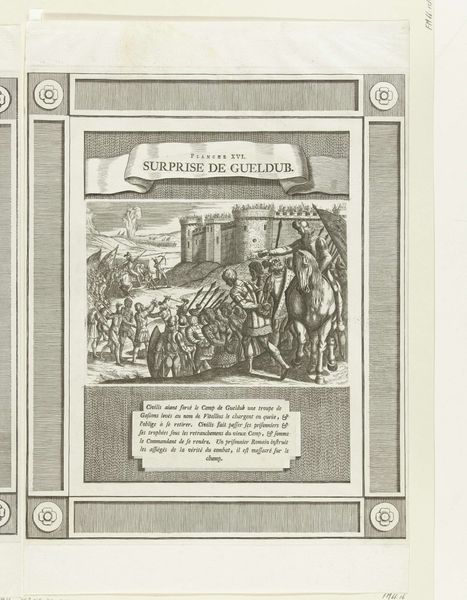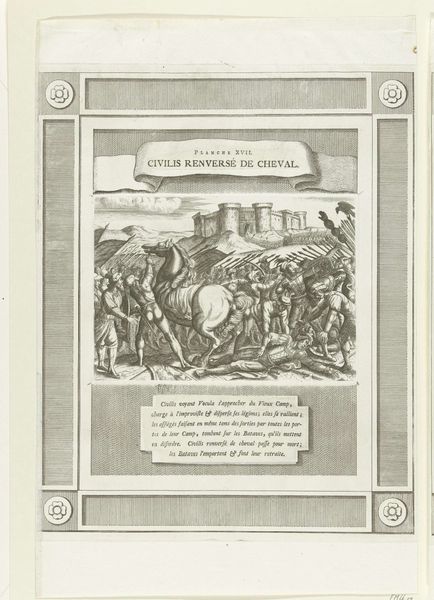
Dimensions: height 140 mm, width 202 mm, height 370 mm, width 300 mm
Copyright: Rijks Museum: Open Domain
This print, dating from 1669-70, depicts a German ambassador visiting Civilis and was made by an anonymous artist using an engraving technique. The engraver meticulously cut lines into a metal plate, likely copper, with a tool called a burin. Ink was then applied to the plate, and the surface wiped clean, leaving ink only in the incised lines. Finally, the plate was pressed onto paper, transferring the image. The act of engraving, like many printmaking processes, allowed for the image to be reproduced and disseminated widely, giving a new form to the history of Civilis. The dense network of lines, carefully laid down, creates a detailed depiction of the scene, emphasizing the textures of clothing, armor, and the landscape. The process involved in creating this image is an exercise in control and precision. This print provides insight into the economic and political power dynamics of the time, offering a window into the intersection of art, production, and cultural narrative.
Comments
No comments
Be the first to comment and join the conversation on the ultimate creative platform.
